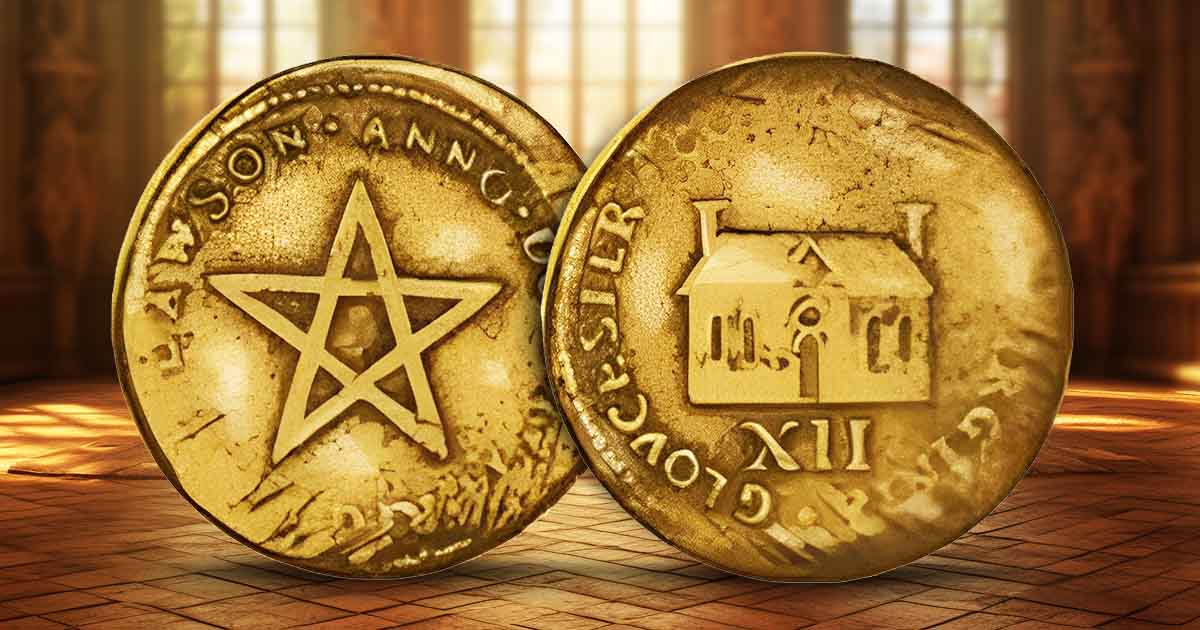
Learn About the Theories Around this Early Colonial Token
Little definitive information is known about what is called a Gloucester Token or Shilling. A family named Righault purchased land near the Gloucester, Virginia, courthouse. Samuel Dawson also owned a tract of land nearby and these may be the people mentioned on the coin. It was once suggested that this token, instead, might be a tobacco warehouse receipt rather than coinage. But the very fact that so few have ever been discovered seems to disprove that theory as tobacco warehouse receipts would be much more plentiful than coinage. The conventional wisdom of this token was that although they were struck in brass, they are patterns for a One Shilling Silver coin that may never have been struck.

The obverse depicts a long building with chimneys on both ends, windows, and a central door. Below the building are the Roman Numerals for 12 “XII” (indicating that it is a Shilling). Around the periphery is the legend “GLOVCESTER COURTHOUSE VIRGINIA.” The outer border of the coin is decorated with rounded beads.
The reverse of the coin has a five-pointed star with the legend, around the periphery of “RIGHAVLT, DAWSON, ANNO. DOM. 1714.” The outer border, as on the obverse is surrounded by rounded beads.
Comparing the three known specimens, all of which are well-worn, gives us an idea of what all of the legends are and how the design looked when complete.
Because only a few examples remain, and all of them are in relatively poor condition, they tend to limit the speculation on the use of these tokens. But all of the existing tokens vary in weight and size but not in design. If struck at a mint, even as a pattern or prototype, one would expect a larger number of coins to have been struck and to have survived. If made by local individuals that may well explain the crudeness of the dies and the variation in size of both the dies and the planchets. Once a die was manufactured, it was likely used until it was no longer serviceable.
There are numerous questions that exist about the reason for the existence of the Gloucester Tokens and whether they were commercially used in 1714. Awe may never know the real answer about these coins until more specimens are uncovered or some written documentation is found.
| Date | Type | Mintage | VG Value | VF Value |
| 1714 | Gloucester Token | 3 Known | $80,000 | $150,000 |
Step into the realm of history with our exceptional assortment of rare U.S. coinage.




